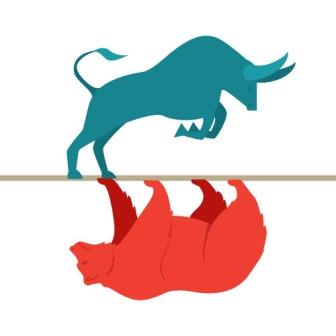 The global economy is entering the next phase of loose monetary policy. Federal Reserve for the second time since 2008 has cut the interest rates. In its September meeting, Fed has lowered the target range for its key interest rate by 25 basis points to a range of 1.75 percent and 2 percent.
The global economy is entering the next phase of loose monetary policy. Federal Reserve for the second time since 2008 has cut the interest rates. In its September meeting, Fed has lowered the target range for its key interest rate by 25 basis points to a range of 1.75 percent and 2 percent.
The European Central Bank (ECB) has gone a step further by announcing the return of Quantitative Easing (QE). Mario Draghi, the outgoing president of the ECB has announced a deposit rate cut by 10 bps from -0.4 percent to -0.5 percent. In addition, ECB will be purchasing € 20 billion of bonds every month from November onwards.
The slowdown in the Eurozone forced the ECB to resume the bond purchase programme, which was put to halt in last December. ECB has cut the growth forecast for the Eurozone area to 1.1 percent this year, and 1.2 percent in 2020. The inflation rate was also lowered to 1.2 percent this year, and 1 percent for the next year.
Growth alarms in Eurozone
Developments in the global economy are not providing conducive environment for economic growth. The negative impact of US-China trade war is not just felt in their respective economies, but across the globe. It has created an atmosphere of policy uncertainty.
The uncertainty surrounding BREXIT has added more layers of muddle. If Britain leaves the European Union without any deal, it would disrupt the movement of goods and services. BREXIT without a deal would lead to more tariffs and border checks which are negative for global trade already suffering due to the US-China trade war.
Moreover, debate is going on whether Germany is heading to a recession. Germany is the largest economy and the powerhouse of the Eurozone. German economy heading towards a recession won’t be good news for the Eurozone as well as for the global economy as a whole. The brunt of the US-China trade war was largely felt in Germany.
The slowdown in the global economy mainly due to trade tensions between the US and China, and BREXIT worries have brought a slump in the global demand. The share of exports in Germany’s GDP is 47 percent. The number clearly shows that the performance of the export sector is important for the health of the German economy. In addition, if the US proceeds with tariffs on cars, the situation could turn out to be much worse for Germany.
The political developments in Italy also are not favourable for Eurozone. With 40 percent of total economic output of the Eurozone coming from Italy and Germany, recovery of both these economies is important for the region.
Is QE the solution?
The developments in the Eurozone called for an adequate response from the ECB. However, the question is whether the ECB should use the tool ‘QE’. Unlike in the past, this time there were many critics on Draghi’s decision to bring back QE. The QE programme was first implemented by Bank of Japan in 2001 to cure the ailing Japanese economy. The sub prime crisis in 2008, forced many developed economies to resort to QE to lift their respective economies. The Federal Reserve, ECB and Bank of England were all votaries of QE. However, the effect of the loose monetary policies was not confined to their respective economies. The spill over effects were felt across the globe, especially on emerging economies like India. For instance, the cheap credit from the developed economies flooded the emerging markets in search of higher returns.
Still, a consensus is not reached on whether QE was an effective tool in uplifting the crisis hit economies. However, the cheap credit flowing from the developed to emerging economies created a very volatile and uncertain market. The best example in this regard is the ‘taper tantrum’ of 2013. The emerging markets found it difficult to digest the news of interest rate hike by the Fed. The interest hike should have been considered as a revival sign of the American economy, but instead it created a series of turbulence in the emerging economies.
India was also not immune from it. We were one among the ‘fragile five’ economies, apart from Brazil, South Africa, Indonesia and Turkey. The hint of a rate hike by the then Fed chief Bernanke led to a reverse flow of capital from emerging economies to the US. The result was a strong dollar and depreciating currencies of the emerging economies. It is a puzzle difficult to solve on why even with a large-scale bond purchase programme like QE, the attainment of 2 percent inflation rate is still a difficult task for many economies. On the other hand, the savers and pensioners suffered with theses policies.
With the coming back of QE, the question is how long it will take for the global economy to return to a normal path of monetary policy. Or else, is it even possible to return to a normal path of monetary policy or is it the new normal. “Will interest rates ever return to normal, and why aren’t they returning to normal?” enquired Bill Gates in one his recent interviews. It looks like no one has an answer to this question.
Everyone is now eyeing the Fed, on whether it will also come up with a QE programme. In Trump’s US, it won’t be a surprise.









